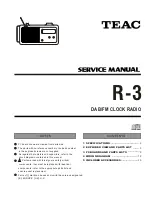
VHF NX2500
English
43
As the range of VHF signals are governed by line of sight, the antenna should be
placed as high as possible, while remaining clear of any metallic objects that could
influence the resonance of the antenna.
The most popular antennae for marine use are 1m (3ft 3in) long. On sail boats these
are usually mounted at the masthead, where the length of the antenna keeps it clear
from the navigation lights and wind vanes etc. This type of antenna can also be
mounted on the cabin roof or radar arch on powerboats.
Longer whip antennae are recommended for larger boats. These radiate the same total
power as smaller antennae, but concentrate it into a narrower beam, which is
advantageous on a tall mast at extreme range where concentrating the available power
into a narrow horizontal beam becomes more important. However, if the antenna is not
vertical when transmitting, the beam will be angled either too high or too low (Fig E).
Here the wider beam of the shorter antenna will be more universally effective, although
the signal will be weaker (Fig F):
Therefore vessels with a large heel angle (small sailboats) would be better choosing a
short masthead antenna. Your local agent should be able to provide specific advice on
antenna choice for the vessel it is to be fitted to.
The antenna coaxial cable and any connectors used must be rated at 50
Ω
. Under no
circumstances should standard domestic TV cable and connectors be used. Incorrectly
rated cabling and connectors could result in power not reaching the antenna, but also
power could be reflected back into the radio, damaging it in the process.
Fig F
Fig E
Содержание NX2500
Страница 2: ...VHF NX2500 English 1...
Страница 46: ...VHF NX2500 English 45 18 WARRANTY...
Страница 47: ...English VHF NX2500 46...
Страница 48: ...VHF NX2500 English 47...
Страница 49: ...English VHF NX2500 48 19 DECLARATION OF CONFORMITY...
Страница 50: ...VHF NX2500 English 49...
Страница 51: ...English VHF NX2500 50...









































